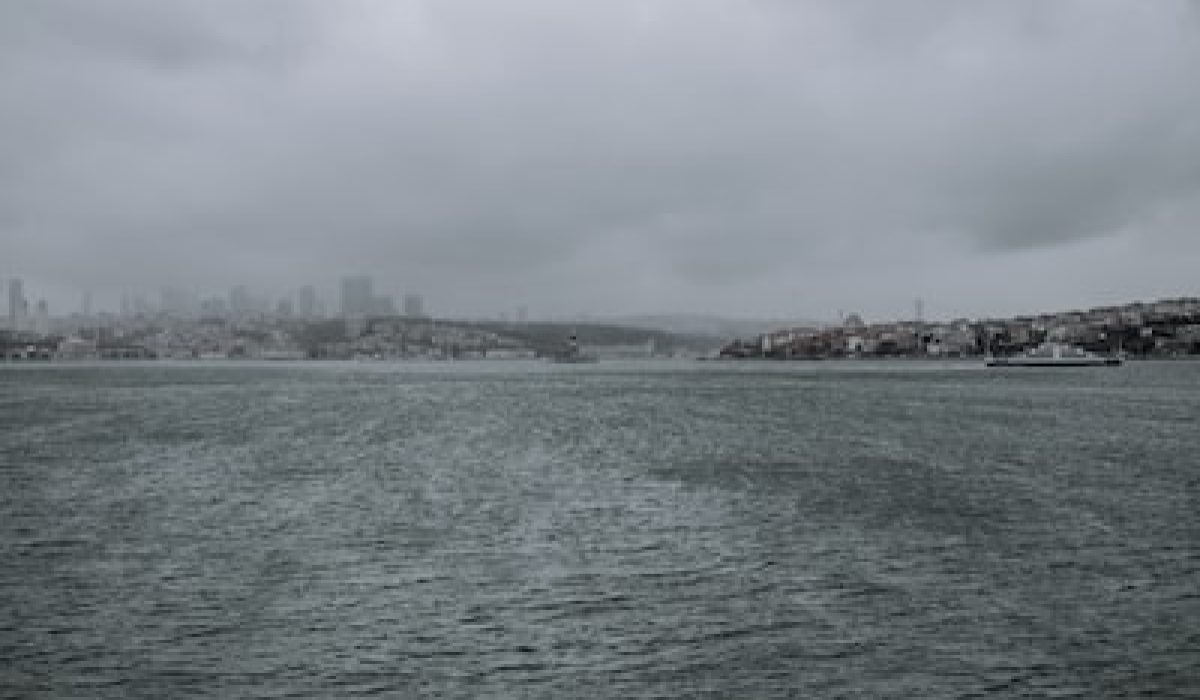Sailing is an enticing and exhilarating activity that allows individuals to connect with the power of nature and embark on incredible adventures. However, to truly navigate the open waters, it is crucial to equip oneself with knowledge and skills that can enhance the sailing experience. In this blog post, we will delve into important aspects of sailing, including understanding wind patterns, the various types of wind and their effects on sailing, navigating tides, utilizing currents to boost sailing performance, and mastering the art of sail trimming. With these essential insights, you can embark on your sailing journey with confidence and finesse.
Importance Of Understanding Wind Patterns
The Art of Sailing: Importance of Understanding Wind Patterns
When it comes to sailing, understanding wind patterns is a crucial skill that every sailor must possess. The wind is not only the driving force behind a sailboat but also plays a significant role in determining its speed, direction, and overall performance. By comprehending the intricacies of wind patterns, sailors can anticipate changes, make informed decisions, and ultimately enhance their sailing experience.
One of the primary reasons why understanding wind patterns is essential in sailing is the ability to choose the most favorable course. Different wind patterns exist in various regions, and detecting these nuances can greatly influence a sailor’s route planning. For instance, knowing the prevailing winds in a specific area can help sailors avoid windless zones or strong headwinds, ultimately optimizing their journey and saving valuable time. This knowledge allows sailors to make adjustments to their sails and navigate the waters more efficiently.
Moreover, wind patterns also have a significant impact on sail trimming. By understanding wind direction and its fluctuations, sailors can adjust the angle of their sails to optimize their boat’s performance. A slight alteration in sail trim can dramatically increase or decrease the boat’s speed, helping sailors harness the maximum power from the wind. Therefore, comprehending wind patterns empowers sailors to trim their sails effectively, thus achieving optimum speed, balance, and control.
Additionally, understanding wind patterns is crucial for ensuring safety while sailing. Sudden changes in wind direction or intensity can pose a significant challenge for sailors. Being able to anticipate these changes allows sailors to make timely adjustments to their sails and navigate through potentially hazardous conditions. Moreover, understanding wind patterns also helps sailors avoid dangerous areas, such as strong currents or shallow waters, which could pose a threat to both the boat and its crew.
In conclusion, the art of sailing is deeply intertwined with understanding wind patterns. By possessing this knowledge, sailors can make informed decisions regarding their route planning, optimize their sail trim, and ensure their safety while at sea. Whether it’s for recreational sailing or competitive racing, comprehending wind patterns is a fundamental skill that every sailor should master. So, let’s embark on a journey to explore the mesmerizing world of wind patterns and unlock the true potential of sailing!
Types Of Wind And Their Effects On Sailing ⏬
When it comes to sailing, understanding the different types of wind and their effects is crucial for any sailor. The wind plays a significant role in determining the speed, direction, and overall performance of a sailboat. By knowing how to read and interpret the wind patterns, sailors can harness its power and maneuver their vessels with precision. In this article, we will explore the various types of wind that sailors encounter and the influence each has on sailing.
Headwinds:
Headwinds are winds blowing directly against the direction of the sailboat. These winds can pose a challenge for sailors, as they create resistance and slow down the boat’s forward momentum. When facing headwinds, sailors may need to adjust their sails, either by reducing their size or changing their angle, to maximize efficiency and maintain steady progress. It’s important to note that headwinds can be affected by factors such as air pressure systems or geographical features, which may result in variations in strength and consistency.
Tailwinds:
Tailwinds, also known as downwind or following winds, blow from behind the sailboat. Unlike headwinds, tailwinds work in favor of sailors, providing a helpful push to propel the boat forward. Due to the assistance provided by tailwinds, sailboats can often achieve higher speeds and cover longer distances with less effort. Sailors must be aware, however, that strong tailwinds can lead to an increase in speed, potentially making the boat harder to control. Adjusting the sail angle and using additional techniques such as reefing can help mitigate any risks associated with excessive speed.
Crosswinds:
Crosswinds blow perpendicular to the sailboat’s heading, coming from either the left or right side. These winds can greatly impact a sailor’s course, requiring them to make adjustments to stay on track. Sailors must learn how to utilize the power of crosswinds through proper trimming of their sails. By manipulating the angle and tension of the sails, sailors can effectively harness the energy of crosswinds to generate forward thrust. However, without proper management, crosswinds can cause the boat to heel excessively and become unstable, potentially leading to capsizing. A sailor’s skill in sail trimming plays a critical role in maintaining balance and stability in such conditions.
Conclusion:
As a sailor, understanding the different types of wind and their effects on sailing is essential for mastering the art of sailing. Headwinds, tailwinds, and crosswinds each present their unique challenges and opportunities. By adapting and responding to these wind patterns, sailors can make the most of their sailing experience, optimizing their speed and maneuverability. Careful sail adjustment and trim techniques enable sailors to overcome the obstacles posed by wind conditions, ensuring a safe and enjoyable voyage on the open waters.
Navigating Tides: A Guide For Sailors 👇
As sailors, understanding tides is essential for a safe and successful voyage. Tides are the rise and fall of the sea level caused by the gravitational forces exerted by the moon and the sun. These tidal movements can significantly impact your sailing experience, so it’s important to know how to navigate them effectively. In this blog post, we will explore the significance of tides and provide you with practical tips and strategies to make the most of them during your sailing adventures.
Understanding the Basics
Before we delve into the intricacies of navigating tides, let’s start with the basics. Tides are classified based on their frequency and magnitude. There are two high tides and two low tides each day, resulting in a semi-diurnal tidal pattern. The difference in water level between high and low tide, known as the tidal range, varies based on factors such as the moon’s phase and the topography of the coastline.
Working with the Tides
The first step in effectively navigating tides is to consult a tide table or use electronic navigation aids that provide tidal information. These resources will give you accurate predictions of tide times and heights for your specific location. By understanding the tidal patterns, you can plan your sailing activities accordingly. For example, it’s generally advised to sail with the incoming tide to avoid strong opposing currents, which can slow your progress and increase fuel consumption.
Dealing with Tidal Currents
One of the significant challenges posed by tides is the presence of tidal currents. Tidal currents occur as the tide changes and water flows in and out of coastal areas, creating currents that can affect your sailing speed and course. It’s crucial to study tidal current charts or consult navigational tools to identify areas with strong currents and plan your route accordingly. By taking advantage of favorable currents, you can enhance your sailing performance and potentially reduce your journey time.
Tidal Tricks and Tips Description 1. Slack Water During tidal changes, there are brief periods known as slack water when the current stops. These windows provide an opportunity to cross areas with strong tidal currents more easily. 2. Estuarial Currents Estuaries, where rivers meet the sea, often experience strong tidal currents. By timing your arrival or departure with the tidal flow, you can utilize the natural currents to your advantage. 3. Back Eddies In some areas, you may encounter back eddies or counter-currents flowing in the opposite direction of the main tidal current. These can present opportunities to navigate against the tide or find calmer waters.
Conclusion
Mastering the art of navigating tides is a fundamental skill for sailors. By understanding the basics of tides, planning your voyages with the tidal patterns in mind, and leveraging favorable tidal currents, you can enhance your sailing performance and make the most of your time on the water. Remember to consult reliable resources, such as tide tables and charts, and continuously update your knowledge to ensure safe and enjoyable sailing experiences.
Utilizing Currents To Enhance Sailing Performance
Sailing is not only about being able to control the sails and navigate using wind patterns, but also about understanding and utilizing various natural forces to enhance your boat’s performance. One such force that can greatly impact your sailing experience is ocean currents. These flowing streams of water can either work with you or against you, depending on your knowledge and ability to utilize them effectively.
When sailing, it is crucial to have a basic understanding of how ocean currents function. Ocean currents are the continuous movements of water in a particular direction, driven by factors such as temperature, wind, and salinity. Their strength, direction, and speed can vary greatly depending on geographical location and seasonal changes. By familiarizing yourself with the currents in your sailing area, you can plan your routes and maneuvers in a way that maximizes the benefits of these natural forces.
One of the primary ways to utilize ocean currents to enhance sailing performance is by using them strategically to aid in navigation. For example, if you are sailing against a strong current, it can significantly hinder your progress. Instead of fighting against it, a skilled sailor may choose to adjust their course slightly to take advantage of a neighboring current that is flowing in a more favorable direction. This allows the boat to harness the power of the current and gain a boost in speed and efficiency.
Benefits of Utilizing Currents Examples Saves energy and fuel By sailing with favorable currents, sailors can reduce their reliance on engine power and conserve fuel. Increased speed By tapping into strong currents, sailors can experience a significant increase in their boat’s speed and, consequently, cover greater distances in less time. Better maneuverability Strategically utilizing currents allows sailors to navigate through challenging areas with greater ease, reducing the risk of collisions or running aground.
In addition to navigation, understanding the behavior of currents can also help in sail trimming. By taking into account the direction and speed of the current, sailors can adjust the trim of their sails to optimize their performance. Trim adjustments can include altering the angle of the sails or changing their shape to harness the current and generate more lift. Proper sail trimming in conjunction with utilizing currents can result in improved boat stability, faster speeds, and an overall more efficient sailing experience.
The art of sailing not only lies in mastering the control of your boat but also in harnessing the power of the elements around you. By understanding and utilizing ocean currents, sailors can enhance their sailing performance, save energy, increase speed, and navigate more effectively. So the next time you set sail, remember to take advantage of these natural forces and let them propel you forward on your nautical adventures.
Mastering The Art Of Sail Trimming
When it comes to sailing, mastering the art of sail trimming is essential for maximizing performance and efficiency on the water. Proper sail trimming involves adjusting the sails to harness the power of the wind and optimize the speed and handling of the boat. It requires a keen understanding of the different elements at play, such as wind direction, sail shape, and boat trim. Whether you are a beginner or an experienced sailor, honing your sail trimming skills is crucial for a successful and enjoyable sailing experience.
One of the key factors in sail trimming is understanding the relationship between the wind and the sails. By adjusting the sails according to wind direction, sailors can effectively harness the power of the wind and propel the boat forward. The mainsail, jib, and spinnaker all require precise adjustments to create the ideal shape and angle for optimal performance. Adjusting the sails too tight or too loose can result in inefficiencies or loss of control, making it crucial to find the perfect balance.
The next important aspect of sail trimming is boat trim. Boat trim refers to the positioning of the crew, weight distribution, and overall balance of the boat. Proper boat trim allows the sails to operate at their full potential, reducing drag and increasing speed. By adjusting the crew’s position and weight distribution, sailors can optimize the boat’s performance and stability. It is vital to maintain a steady and balanced boat trim as changes in wind and sea conditions can impact the sailing dynamics.
In addition to wind and boat trim, sail shape plays a crucial role in sail trimming. The shape of the sails determines their ability to generate lift and power. By adjusting the tension of the sail controls, such as the halyard, cunningham, and outhaul, sailors can fine-tune the shape of the sails to achieve maximum efficiency. Understanding how sail shape affects performance and making precise adjustments accordingly can significantly enhance sailing performance and speed.
Frequently Asked Questions
What is the importance of understanding wind patterns in sailing?
Understanding wind patterns is crucial for sailors as it helps them determine the best routes, plan their sails, and optimize their speed.
What are the different types of wind and how do they affect sailing?
There are various types of wind, including trade winds, prevailing winds, and local winds. Understanding their characteristics is essential for sailors to adjust their sails and navigate more efficiently.
How can sailors navigate tides effectively?
Navigating tides requires knowledge of their timing, direction, and strength. Sailors can use tidal charts, buoys, and landmarks to plan their routes and avoid potential dangers.
How can sailors utilize currents to enhance their sailing performance?
By understanding ocean currents, sailors can use them to their advantage, either by riding with favorable currents to increase speed or strategizing to minimize the impact of unfavorable currents.
What are some tips for mastering the art of sail trimming?
Sail trimming is essential for optimizing the power and efficiency of a sailboat. Sailors should learn how to adjust the sails’ shape, trim them correctly for different wind conditions, and constantly fine-tune to improve performance.
How important is it for sailors to understand the role of weather in sailing?
Understanding weather patterns is vital for sailors as it helps them make informed decisions regarding safety, route planning, and optimizing their sailboat’s performance. Weather knowledge allows sailors to anticipate and respond effectively to changing conditions.
What are some valuable tips for handling storms at sea?
Storms at sea can be dangerous, but with proper preparation and knowledge, sailors can navigate them safely. Some tips include reefing the sails, using storm tactics, staying alert to changing conditions, and having a well-equipped and properly maintained boat.




